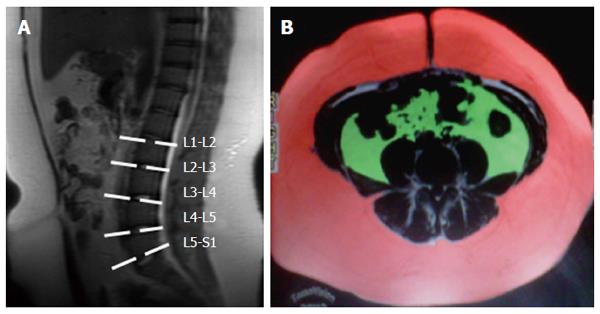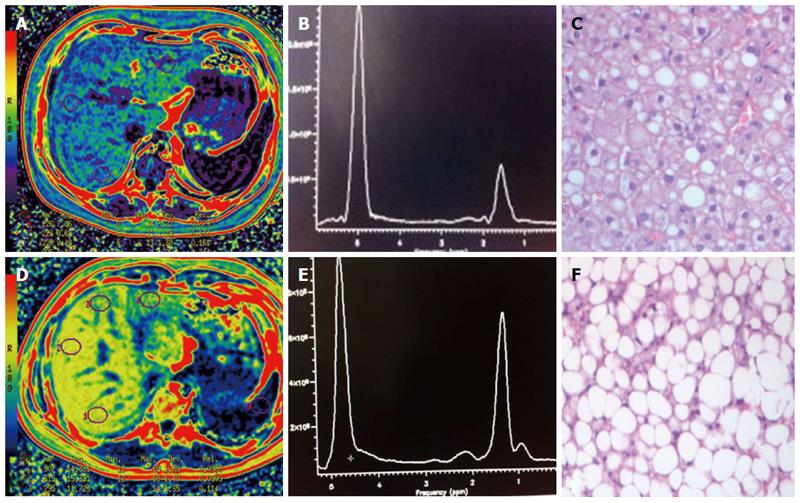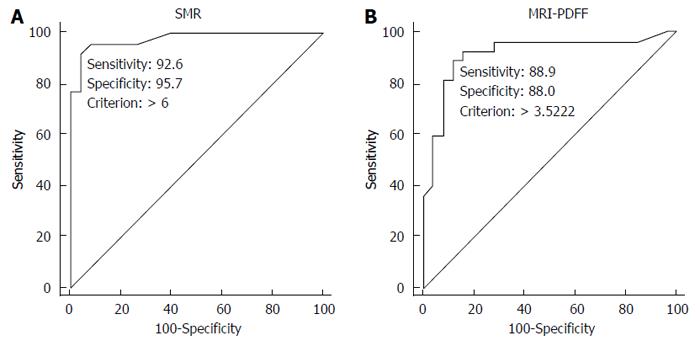Copyright
©The Author(s) 2016.
World J Gastroenterol. Oct 21, 2016; 22(39): 8812-8819
Published online Oct 21, 2016. doi: 10.3748/wjg.v22.i39.8812
Published online Oct 21, 2016. doi: 10.3748/wjg.v22.i39.8812
Figure 1 Subcutaneous and visceral fat measurement technique.
A: Sagittal T1-weighted localizer MR image used to select levels for analysis (L1-L2, L2-L3, L3-L4, L4-L5, L5-S1); B: Axial T1-weighted MR image with water suppression at the L4-L5 level. Contrast was manually adjusted to select signal from subcutaneous (red) and visceral (green) adipose tissue. Area of this fat was calculated by the workstation and summarized with that of other levels.
Figure 2 Mean lipid content for MR-Spectroscopy.
A-C: MRI-PDFF reveals a hepatic fat fraction of 7%, MRS quantified 6.5% of liver steatosis and histological analysis 30% of liver steatosis; D-F: Severe hepatic steatosis in a 8-year-old girl: MRII-PDFF 25%, MRS 50% and histologic analysis 90% of liver steatosis respectively.
Figure 3 Receiver operating characteristic curve analysis of MR Spectrscopy (A) and MR imaging-PDFF (B) for discrimination of healthy from non-alcoholic fatty liver disease children.
Figure 4 Evaluation of magnetic resonance imagingestimated-proton density fat fraction at medium and high level of hepatic steatosis.
A, B: Differences between liver fat fraction estimated by using 1H MR spectroscopy and triple-echo sequence compared with histology were plotted against means, with 95% confidence intervals (Bland-Altman plot); C: All data points were within limits of agreement (dotted lines), corresponding to 1.96 SDs from mean. MRS: MR-Spectroscopy.
- Citation: Di Martino M, Pacifico L, Bezzi M, Di Miscio R, Sacconi B, Chiesa C, Catalano C. Comparison of magnetic resonance spectroscopy, proton density fat fraction and histological analysis in the quantification of liver steatosis in children and adolescents. World J Gastroenterol 2016; 22(39): 8812-8819
- URL: https://www.wjgnet.com/1007-9327/full/v22/i39/8812.htm
- DOI: https://dx.doi.org/10.3748/wjg.v22.i39.8812












